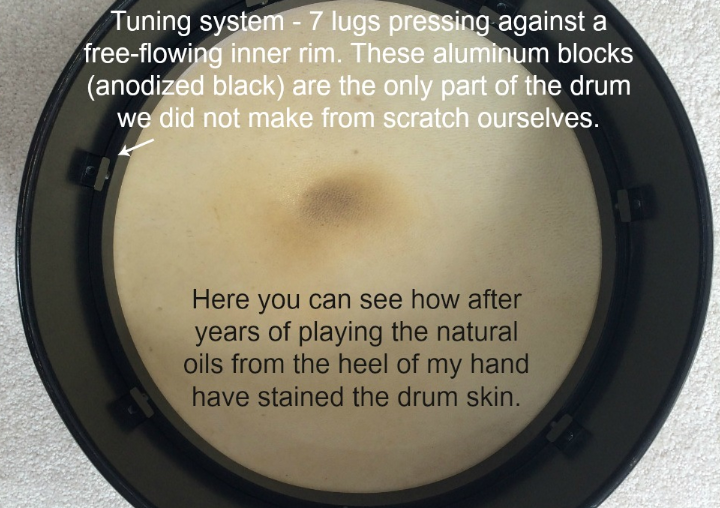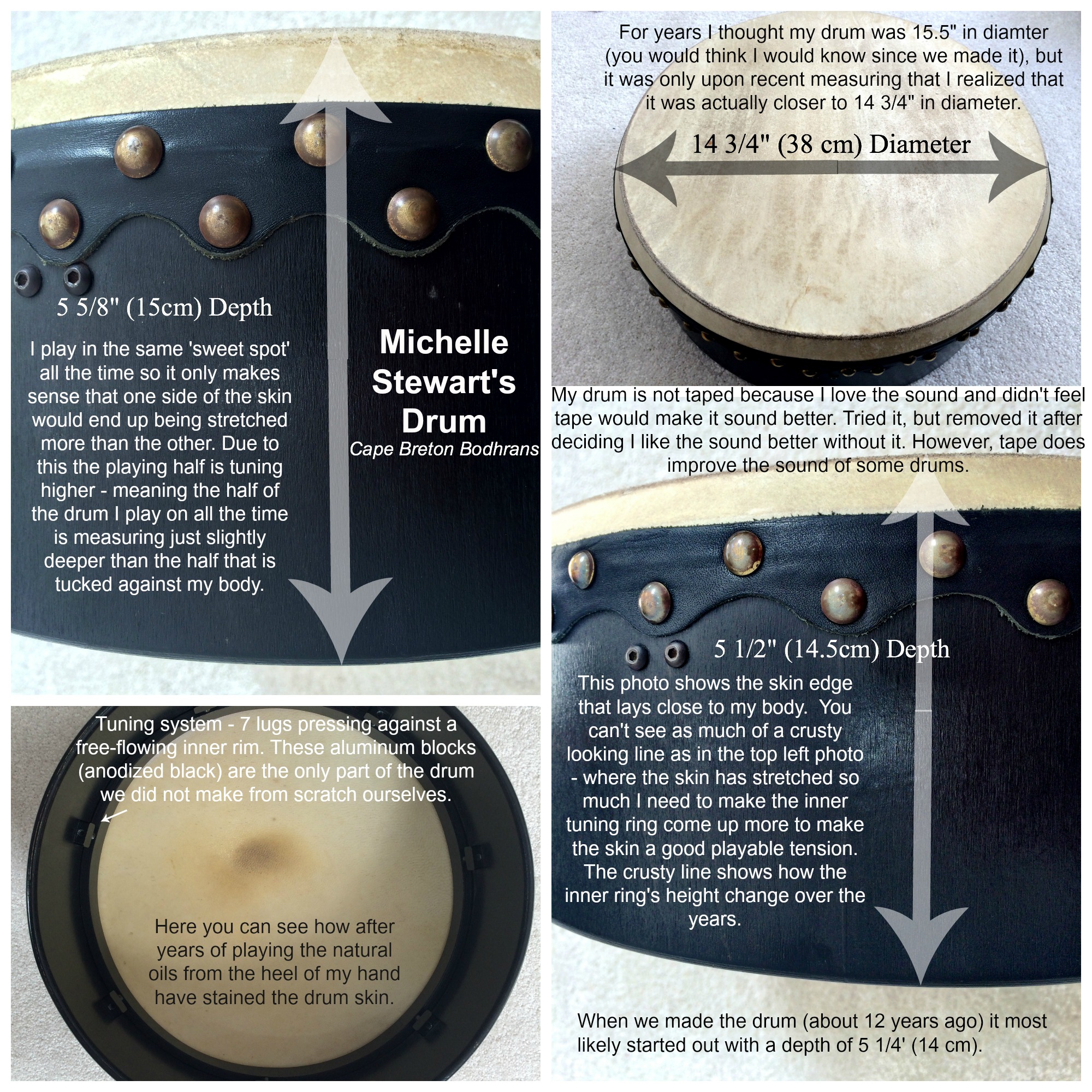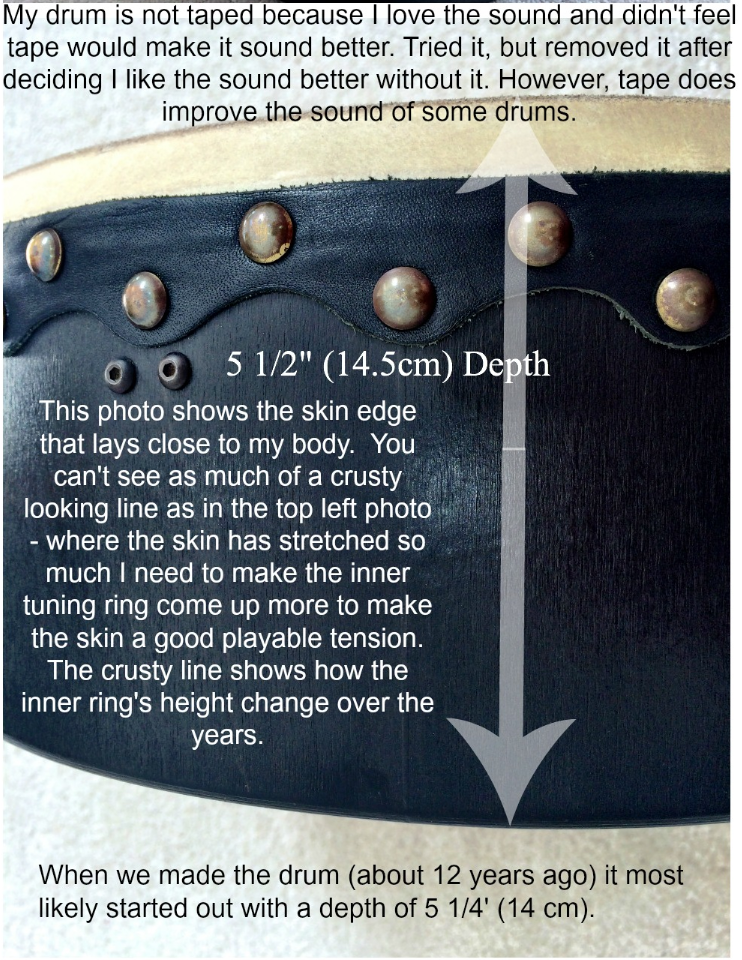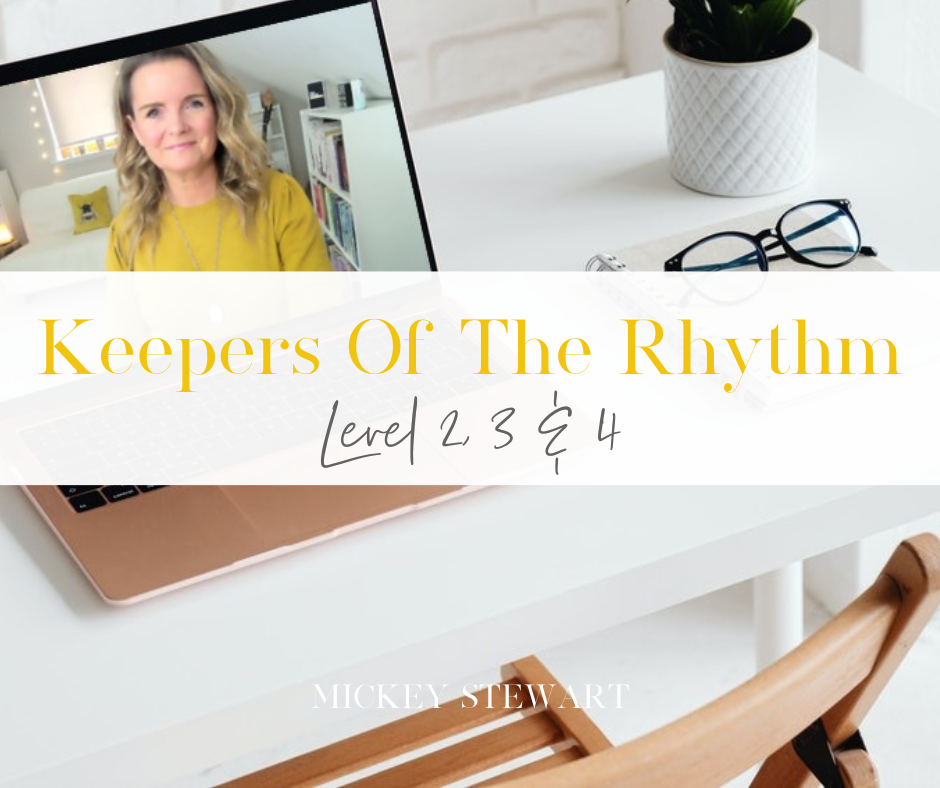I get asked about my bodhran a lot so I took some time to measure it, take a few photos and add some detailed notes.
As you read on you’ll see how I even learned something new about my drum just in measuring it for this article.
My intention was to try to answer the most common questions I get asked and to simply help and share from my experience.
It’s not to say anyone looking to purchase a new drum should try to go by these exact measurements.
Although most people who try my drum find it quite comfortable I have only included measurements here as a guideline.
Transitioning From A Larger To Smaller Diameter
When I first went from an 18″ drum to just under 15″ I would get extra (unintentional) rim shots because I was used to working with a larger playing surface and extending my tipper arm further out. It took a while to adjust to the smaller size, but I’d never go back to regularly playing an 18″ drum. Now I personally prefer this smaller size because it’s what I’m used to.
My next drum will most likely be a 14″ diameter bodhran, mainly due to the tonal opportunities it can offer, but also partly due to the fact that I already have a drum of the 15″ family.
It is difficult to get as wide of a range of tonal changes out of an 18″ drum as you can out of a 15″ drum. For this reason I would suggest going smaller if you currently have an 18″ drum and looking to upgrade and want more notes to work with.
Finding The Right Size For You
The 14″ – 16″ diameter range suits most people. Your choice of drum isn’t determined by your general physical body size, but if you are a larger-breasted female or a man with very large hands you may find a 14″ diameter bodhran too restrictive. The 15″ – 16″ range would probably be more comfortable. I know an inch in the difference doesn’t sound like it would give you that much more room, but it really does. I’m 5’3″, and of average size, and now find even a 16″ drum too big for me.
Maker
My drum was made by my husband, Mark, and myself. When we lived in Canada in the ’90’s we had a successful drum making business, Cape Breton Bodhrans. We even had an apprentice working with us at one point.
We moved back to Scotland in 2001 and set up a small workshop. This drum, the one I play in my videos, was one of the first drums we made in it. However, we’ve since knocked down our workshop and old house to build new houses on the same plot of land. Although we’re now in our new house, and plan to set up a small workshop in the future, we expect it will be more for our own personal use rather than commercial production.
Depth – Playing Side
I play in the same ‘sweet spot’ all the time so it only makes sense that one side of the skin would end up being stretched more than the other. Due to this the playing half is tuning higher – meaning the half of the drum I play on all the time is measuring just slightly deeper than the half that is tucked against my body. This playing section of the goatskin has lost more of its natural elasticity than the other half of the skin.
I know, you’re probably thinking ‘Couldn’t you just adjust the tuning so both sides were even?’. Yes I could, but it doesn’t sound in tune with itself when I do that due to the difference in skin elasticity of each half of the drum head.
What you have to realise though is that this is an extreme case. I play my bodhran more in a summer than most people will play their drum in a lifetime. Some days I may be teaching, performing, and playing my drum up to 7 or 8 hours A DAY!
As the skin was stretched more on one half than the other through playing the inner tuning ring needed to come up more on one side merely to help the more stretched side come up to the same tension as the other and make the skin a good playable tension.
The crusty line on the skin edge shows how the inner ring’s height changed over the years. It reminds me of how rings on a tree trunk show how old it is.
Another thing to remember is that working with an animal skin is quite different from working with a man-made product. More transparent areas of the drum head are thinner than the less transparent sections. You can see this more clearly if you hold you drum up to the light of a window.
How Deep Is Too Deep?
When we made this drum (about 12 years ago) it most likely started out with a depth of 5 1/4″ (14 cm). It took me a while to get used to the smaller diameter, deeper shell and no crossbar, but this change was a good one. I wouldn’t recommend going any deeper than my drum. A depth closer to 6″ is really too deep for my liking. It’s difficult to get your arm around and as a result awkward to get any back hand pressure or movement to change tones.
Teaching hundreds of people in person over the last two and a half decades, and having them try various sized drums, gives me the confidence to guide you on this.
Tuning System
The tuning mechanism consists of 7 lugs pressing against a free-flowing, wooden inner rim. These aluminium blocks (anodised black) are the only part of the drum we did not make from scratch ourselves.
 The Skin
The Skin
The skin is goatskin and super soft after years of excessive use. In the photo you can see how after years of playing the natural oils from the heel of my hand have stained the drum skin. Up close the darkened spot is quite shiny and looks as if I’ve poured extra virgin olive oil on to it, but it’s just the natural oils from my hand.
Diameter
For years I thought my drum was 15.5″ in diameter (you would think I would remember since we made it), but it was only upon recent measuring that I realised it was actually closer to 14 3/4″ in diameter.
Why My Bodhran Isn’t Taped
My drum is not taped. Tried it, but removed it after deciding I liked the sound better without it. However, tape does improve the sound of some drums. It can even offer a nice ‘slappy’ sound for those offbeat pops. I enjoy playing other people’s drums that are taped so don’t be swayed by my drum. In fact, it’s likely my next drum will have tape on it.
 Depth – Body Side
Depth – Body Side
The photo below shows the skin edge that lays close to my body. You can’t see as much of a crusty looking line as in the playing side photo and the depth is a bit less than the playing side depth.
The Finishing Touch
The brass tacks were longer than the depth of the shell so all 56 of them had to be individually snipped and then filed down on one side to make a sharp point. The skin was stapled and glued to the frame under the black, scalloped leather finishing band. These finishing touches alone were quite time consuming so when you look at the price of drums and think they are expensive think of how much time has gone in to making them. If my memory serves me right my drum took approximately 40 hours to make.
I hope this article helps anyone looking to upgrade to a new drum.
I really hesitate from suggesting any one particular maker because I think there are a lot of amazing makers out there today. It wouldn’t be right to direct all the traffic to just one – and I wouldn’t be able to pick anyway.
Be sure to check out my ‘Bodhran Makers Of The World’ list. Here you’ll find makers categorised by county and direct links to their websites.
You will love your drum so much more knowing that you’ve done the research to find the drum that best suits you. It’s ok for us to all have different preferences.
Drum and Dream On!
~ Michelle
———————————————————————————
PLATINUM MEMBERSHIP IS NOW OPEN!
CLICK HERE TO JOIN TODAY!
———————————————————————————










{ 5 comments… read them below or add one }
Should i treat my drum with olive oil?
Is the skin really tight and dry, David? I have mostly used Dubbin and Lexol spray. Some of my students have had success with olive oil, neatsfoot oil, lanolin cream, etc. Just be careful not to overdo it with the more absorbent oils during dry winter months if you have a non-tunable. It can result in a very floppy skin come humid summer time. Here’s a video I did a few years ago on treating the skin. https://www.youtube.com/watch?v=HJrdBFDSIng Depending on the make some really rough, dry skins (mostly the mass produced models) can really benefit from a light sand on the playing surface if it’s rough to the hand (starting with something like 240 grit all the way up to 2000 grip sand paper). Hope that helps. Let me know how you get on.
Thanks, this was very helpful. I have been playing an 18 inch drum. I think maybe it is a little too big. I guess it might have to do with extending my tipper arm out. When I extend it to far I lose some wrist action. Of course, I have a little arthritis which doesn’t help much. So, smaller drum maybe, huh?
Very enjoyable, insightful and detailed article Michelle, thanks for this!
I put some olive oil on both sides of my #2 goat skin bodhran and the first thing I noticed was that it turned a darker brown color. This actually enhanced the look of the drum! It definitely made the skin
On my #1 drum I used Lexol and it was ok.
Cleaning the goat skin seems an issue when you have had the drum for a while.
Albert Alfonso tells buyers of his drums to WASH THEIR HANDS before playing!
Christian Hedwitschalk recommends using Camillia sead oil on the outside of the skin to keep it clean.
I’ve never tried Dubbin on a drum (only on my old soccer ball when I was a kid).
Regards,
Dave hutton